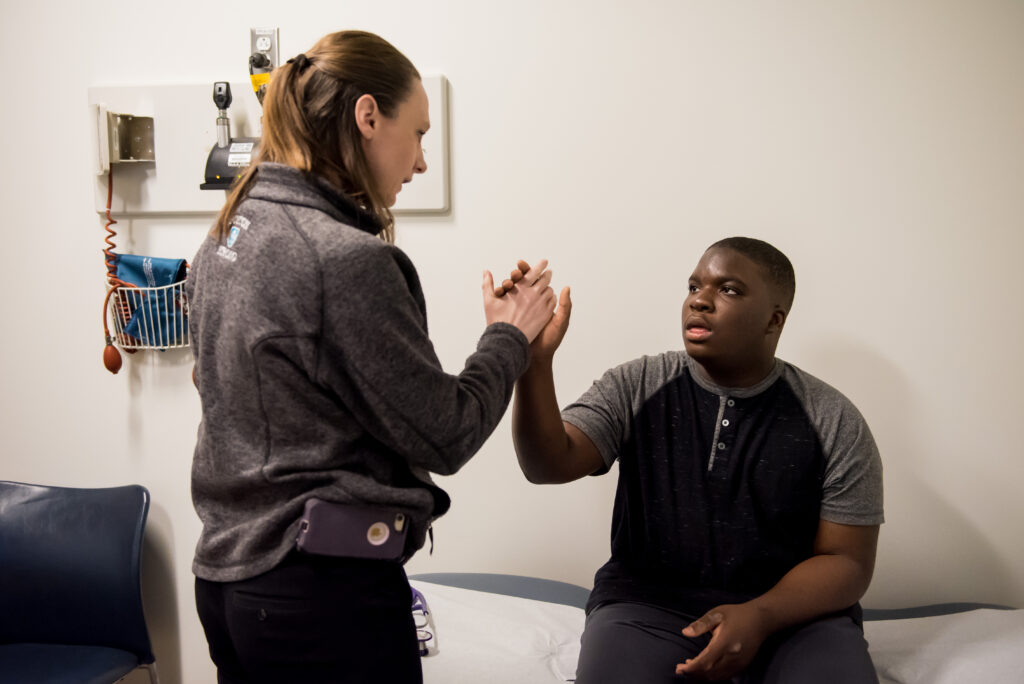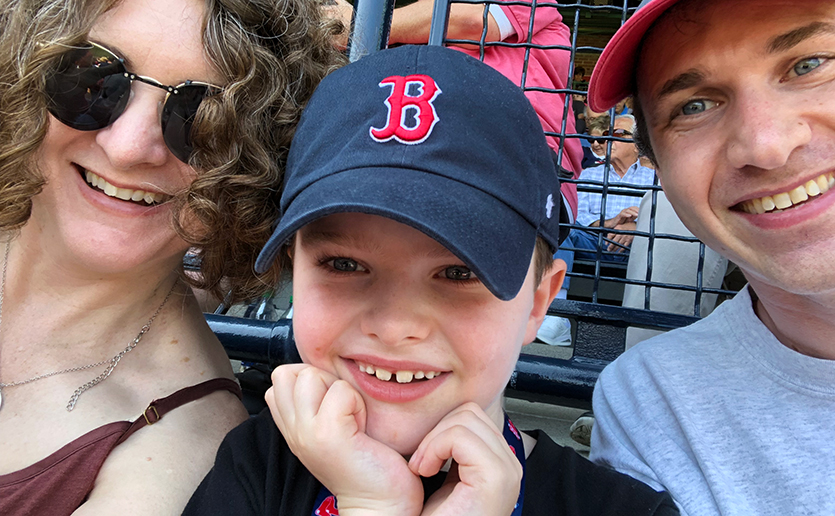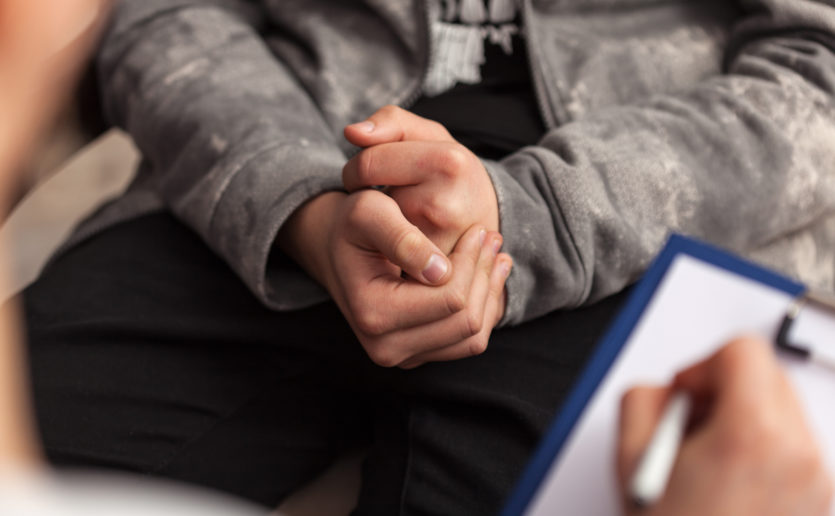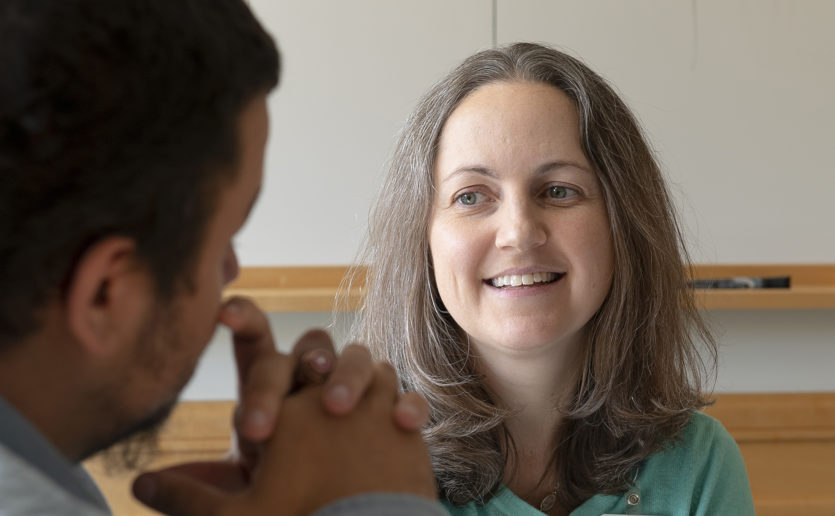Researchers at the Lurie Center for Autism at Massachusetts General Hospital are exploring how commercial technologies might help children with autism communicate. The project is being supported by Game On For Autism Research (GoFAR, www.GoFarFoundation.org ), a non-profit founded by impassioned teenager Jamie Menhall from BU Academy High School in Boston.

The Potential of Affinity Therapy
“Affinity therapy” is a term coined by journalist Ron Suskind, creator of the technology known as Sidekicks, for kids, like his son, with autism. Children with autism spectrum disorder (ASD) often have a favored activity or fixation traditionally known as a “restricted interest,” an obsession that may get in the way of other kinds of learning and communication. Mr. Suskind is among a growing number of parents and researchers who prefer to view these interests less as restrictive obsessions and more as passions—or “affinities.”
“Powerful interests, or affinities, can and do help people on the spectrum make social, emotional, and situational sense of the world, just as the rest of us rely on our passions to bring joy, relieve anxiety, know ourselves and engage with others,” Mr. Suskind says. “Jamie has experienced this firsthand, and his support for research endeavors that will validate the experiences of people on the spectrum will be a step forward in the growing field of affinity research.”
“Many therapists and parents really respond to the idea of seeing affinities as windows of opportunity to get into their child’s world,” says Kirstin Birtwell, PhD, staff psychologist at the Lurie Center.
Dr. Birtwell is examining the science behind Sidekicks, which embodies the affinity therapy philosophy. Birtwell’s study will examine the use of Sidekicks in children with ASD, some of whom will also receive cognitive behavioral therapy. Jamie Menhall and GoFAR, meanwhile, have raised and contributed funds to help her expand and deepen her work.
A Personal Passion
Jamie’s personal connection to autism began five years ago, at age 12, when he was volunteering to provide peer support for adolescents with ASD. While meeting with teen patients one on one, he was struck by how difficult it was for them to communicate. He soon discovered he had a knack for reaching his autistic peers, all because he worked to identify what they cared about and used it as a point of connection.
Children with ASD often have a favored activity or fixation that may get in the way of other kinds of learning and communication.
During an internship at a treatment center, Jamie realized that many of the patients shared his passion for video-games. He was surprised by how focused many kids were when playing Autcraft (Minecraft for people with autism). To him, it was a revelation: Patients were engaged, touching, tapping and swiping screens, drawing and building digital structures with other players.
“I could sense pride and joy beaming from the children as their efforts were admired and reinforced,” Jamie says.
Inspired by this epiphany, Jamie began to research how games and touchscreen technology were being used to help autistic patients communicate. He was excited by the anecdotal evidence he found, but also surprised at the lack of science to back it up. The solution, he believed, was more targeted funding for inquiry into transformative, affinity-based technologies for ASD.
To date, GoFAR has raised money from private individuals, non-profit donors such as The Endicott Family Charitable Fund, and corporate sponsors such as Herb Chambers.
Children with Autism
Now 17, Jamie is more passionate than ever about helping people with ASD through technology. He recently met Dr. Birtwell at the Lurie Center, an experience he calls exhilarating. “Like me, she believes that technology can have a life-changing, transformative effect, and can empower and improve the lives of everyone affected by ASD,” he says.

The two discussed Dr. Birtwell’s affinity-based research, and how the project’s data can pave the way for developing an understanding of who benefits from Sidekicks technology—and how best to get it into families’ hands as soon as possible.
“It’s admirable what Jamie is choosing to do with his time,” Dr. Birtwell says. “It’s so refreshing to sit with someone so enthusiastic and motivated. I saw the light inside of him beam when he talked about the work being done, and what could be done.”
For Jamie, it all comes back to the fact that autistic people deserve support and tangible help here and now. “I consider myself very fortunate, it’s my way of giving back, of counting my blessings,” he says, crediting the help of two Mass General doctors. “My wonderful mentors, Drs. Leslie Fang and Gene Beresin, both cheered me on and insisted that there is no minimum age when it comes to doing good!”
For more information about supporting ASD research, please contact us.






